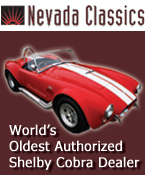 
 Main Menu
Main Menu
|
 Nevada Classics
Nevada Classics
|
 Advertise at CC
Advertise at CC
|
 November 2024
November 2024
|
| S |
M |
T |
W |
T |
F |
S |
| |
|
|
|
|
1 |
2 |
| 3 |
4 |
5 |
6 |
7 |
8 |
9 |
| 10 |
11 |
12 |
13 |
14 |
15 |
16 |
| 17 |
18 |
19 |
20 |
21 |
22 |
23 |
| 24 |
25 |
26 |
27 |
28 |
29 |
30 |
|
 CC Advertisers
CC Advertisers
|
|

12-09-2010, 08:55 AM
|
|
CC Member

|
|
|
Join Date: Oct 2010
Cobra Make, Engine: Superformance
Posts: 663
|
|

 Not Ranked
Not Ranked
Quote:
Originally Posted by olddog

Since the the cross hatch is going both directions friction is not likely what is causing the rotation. My theory is that it is vibration that causes them to rotate just like the propeller on the stick above.
|
Quote:
Originally Posted by Excaliber

I would not assume the cross hatch is perfectly equal, it's not likely to be perfect. With more or less cross hatch on either the down or up stroke and some variance between cylinders.
|
Great thread! You learn something new every day.
I think you both are on the right track with respect to why rotational direction and the speed of that rotation are directly correlated to the cross hatch angle and depth (and uniformity). The minute irregularities promote the motion, along with vibration and lubricity. Absent any of these variables, I believe premature failure is the result. |
-
Advertising


12-09-2010, 09:06 AM
|
 |
CC Member

|
|
|
Join Date: Jan 2008
Location: Williamsport,
PA
Cobra Make, Engine: Kellison Stallion 468 FE
Posts: 2,703
|
|

 Not Ranked
Not Ranked
Quote:
Originally Posted by CobraEd

I thought the cross hatch was for initial break in and seating of the rings, and that it is worn off after the engine is broken in.
.
|
promotes oil retention on the cylinder wall. with proper maintenance, i have seen 100k mile motors still retaining some cross hatch, when cross hatch is gone ring rotation stops\decreases
__________________
Fred B
|

12-09-2010, 09:18 AM
|
|
CC Member

|
|
|
Join Date: Dec 2001
Location: Louisville,
KY
Cobra Make, Engine: I'm Cobra-less!
Posts: 9,417
|
|

 Not Ranked
Not Ranked
Quote:
Originally Posted by CobraEd

I thought the cross hatch was for initial break in and seating of the rings, and that it is worn off after the engine is broken in.
.
|
Hone marks will stay on for a long time.....I've pulled apart engines with 100k miles on them with the crosshatch still there. |

12-09-2010, 09:44 AM
|
 |
CC Member

|
|
|
Join Date: Jan 2009
Location: Las Vegas,
NV
Cobra Make, Engine: Shelby CSX4005LA, Roush 427IR
Posts: 5,573
|
|

 Not Ranked
Not Ranked
I guess I'd never thought that they didn't rotate or there would be some kind of scoring on the cylinder side from the gap (I think there was one picture of this). The cross hatch pattern will have a different effect on the ring during the up part of the stroke than the down part, so there will be some difference between the up twist and down twist.
__________________
Cheers,
Tony
CSX4005LA
|

12-09-2010, 04:14 PM
|
 |
CC Member

|
|
|
Join Date: Feb 2006
Cobra Make, Engine:
Posts: 4,926
|
|

 Not Ranked
Not Ranked
The Kirkhams need to make a Billet engine, with a sealed viewing port at the piston(s), along an accessible part of the cylinder wall. Then, with a high-speed camera, record the rings as they pass by the port, and see if the ring gaps have moved at all.
Simple, really. 
__________________
Of course it's REAL! You are NOT imagining it!
We don't want a bigger government; We want a government that does a few BIG things, and does them right.
If you think that you can cut it, if you think you got the time, they'll only give you one chance, better get it right first time. 'Cause in this game you're playin, if you lose you got to pay. And if you make just ONE wrong move, you'll get BLOWN AWAY!
|

12-09-2010, 04:37 PM
|
|
CC Member

|
|
|
Join Date: Mar 2006
Cobra Make, Engine:
Posts: 277
|
|

 Not Ranked
Not Ranked
If they didn't rotate, 2-stroke rings wouldn't need to be pegged, huh?
|

12-09-2010, 07:01 PM
|
 |
Senior Club Cobra Member

|
|
|
Join Date: Jun 2004
Location: Huntington,
VT
Cobra Make, Engine: E-M 427 Top Oiler stroked to 482 by KC, Stage 2 heads, a Quikfuel and Voila, 640 hp
Posts: 502
|
|

 Not Ranked
Not Ranked
__________________
At first, nothing happened. Then after a few seconds, nothing continued to happen.
Douglas Adams - Hitchhiker's guide to the Galaxy
|

12-10-2010, 03:38 PM
|
|
CC Member

|
|
|
Join Date: May 2006
Location: St. Louisville,
Oh
Cobra Make, Engine: A&C 67 427 cobra SB
Posts: 2,445
|
|

 Not Ranked
Not Ranked
Quote:
Originally Posted by 55312

|
Yep that's it. |

12-10-2010, 03:43 PM
|
|
CC Member

|
|
|
Join Date: May 2006
Location: St. Louisville,
Oh
Cobra Make, Engine: A&C 67 427 cobra SB
Posts: 2,445
|
|

 Not Ranked
Not Ranked
Quote:
Originally Posted by Maurice Johnson

If they didn't rotate, 2-stroke rings wouldn't need to be pegged, huh?
|
There was never any doubt it my mind that they moved around. I assumed back and forth, or if it was a complete rotation, I was assuming 1 or two per hour.
This 10 rpm thing is what blew my mind. However Barry did say it was random and rotates both directions. |

12-10-2010, 06:36 PM
|
|
CC Member

|
|
|
Join Date: Mar 2006
Cobra Make, Engine:
Posts: 277
|
|

 Not Ranked
Not Ranked
We know that the bores wear on the thrust face because we can measure the wear with a micrometer.
On the power stroke the ring must therefore be compressed more tightly into the piston groove, peaking friction in line with the conn rod, and decreasing the ring contact pressure in both direction away from the highest pressure point.
If the ring has rotated so that the gap is aligned with the fore and aft centerline of the engine, then that quarter of the ring will exert less force against the bore wall than the other 3/4 of the ring.
Unequal pressure causes the weaker force to give way to the stronger in the form of rotation.
Phew!!-that used up some brain cells-I'm gonna get me a rum and coke.
Last edited by Maurice Johnson; 12-10-2010 at 06:38 PM..
Reason: added text
|

12-17-2010, 11:37 AM
|
|
CC Member

|
|
|
Join Date: Sep 2003
Cobra Make, Engine: ERA - 427
Posts: 56
|
|

 Not Ranked
Not Ranked
Most two stroke cycle engines need the rings pinned to avoid snagging a port with the end of a ring. It also may explain that they don't need to rotate.
|

12-17-2010, 11:46 PM
|
|
CC Member

|
|
|
Join Date: Mar 2003
Location: Arkadelphia, AR,
AR
Cobra Make, Engine: Kirkham 427 brushed aluminum with Keith Craft 527C.I. all aluminum FE
Posts: 992
|
|

 Not Ranked
Not Ranked

One thing not mentioned here is the affect of the combustion gases on the rings and how it goes by the rings and turns them. You will almost always see the end gaps lined up on the compression rings on engines that have been run a while and I think this is caused by the combustion gases going by the top ring and turning it as it looks for the gap on the second ring to go by and then turns it back the other direction. I do not think the oil rings move much.
The type of ring used will have a lot to do with it also, like the ring tension, width, where it is located on the piston, is it gas ported and such. The cylinder finish is the most important thing on the cylinder and ring seal and you better not be doing your Dart blocks like your stock blocks or your aluminum blocks with the hardened liners like the other two. You have to drag the cylinders and check the RA on them to make sure you are getting the correct finish on the cylinder. You can have them to slick or to rough. Most people get them to slick and burnish the rings. There is more to this than most people understand any more. I have notes and stones for several different blocks and even change the amount of strokes depending on the blocks and rings. I know the rings spin but how much I am not sure of but I do not care as long as they seal and make power. You do need a straight round cylinder and I will say that my new Sunnen SV-10, 50,000.00 hone will hone a cylinder within about 1/4 thousand of roundness and straightness but it should do more than that for that kind of money. I figure it will take about 500 block to get it paid for give or take a little. Sounds like I need to hone some damn blocks. Why would anybody do this to them selves.
Good luck, Keith
__________________
Keith C
|

12-18-2010, 01:42 AM
|
 |
CC Member

|
|
|
Join Date: Jun 2000
Location: Cape Town, South Africa/Mainz, Germany,
Posts: 1,601
|
|

 Not Ranked
Not Ranked
old dog:
as for the better heat disappation (note: "better") isolated hot spots on the ring or wall would be moved around up during rotation allowing hot spots to meet cooler ones?
Lining them up straight won't cause them to spin? Interesting, maybe the combustion gases act sot of like a pin down all the ring gaps "ligning them up" and keeping them there?
Patrickt:
I never quite understood the gap positioning, based on the rings turning.
BTW, do different engines call for different positions of such gap during assembly?
__________________
If I don't respond anymore, that's because I can't log in
|

12-21-2010, 12:36 PM
|
|
CC Member

|
|
|
Join Date: May 2006
Location: St. Louisville,
Oh
Cobra Make, Engine: A&C 67 427 cobra SB
Posts: 2,445
|
|

 Not Ranked
Not Ranked

Quote:
Originally Posted by Keithc8

One thing not mentioned here is the affect of the combustion gases on the rings and how it goes by the rings and turns them. You will almost always see the end gaps lined up on the compression rings on engines that have been run a while and I think this is caused by the combustion gases going by the top ring and turning it as it looks for the gap on the second ring to go by and then turns it back the other direction. I do not think the oil rings move much. |
I pulled an aluminum block 4.6 ltr modular engine, out of a 96 Lincoln that had 105K miles on it. All 8 pistons had the compression ring gaps aligned, but not the oil rings, as you described. The gaps on all 8 pistons were located in the same spot (say at the 6 O'clock position), as I was quite puzzled by it. At the time I assumed it must have been assembled that way, because I couldn't understand how 8 pistons would have all ended up in the same position.
So this begs the question, why not go to the gap-less ring technology, and eliminate the compression ring gaps?
What is wrong with gap-less rings? I never hear any builders say much about them, and as far as I know, I never heard of a new car manufacturer using them (which they may).
Last edited by olddog; 12-21-2010 at 12:41 PM..
|

12-21-2010, 02:05 PM
|
|
CC Member

|
|
|
Join Date: May 2006
Location: St. Louisville,
Oh
Cobra Make, Engine: A&C 67 427 cobra SB
Posts: 2,445
|
|

 Not Ranked
Not Ranked

Quote:
Originally Posted by Dominik

old dog:
as for the better heat disappation (note: "better") isolated hot spots on the ring or wall would be moved around up during rotation allowing hot spots to meet cooler ones?
|
Since the piston goes up and down the cylinder, the rings are always coming into contact with a different area of the cylinder wall. I would expect the temperature to be the hottest where the most fuel is burned, which would be toward the top. I am doubting that there is a big temperature difference radially at any given plane in the cylinder. Of course how the water jackets are constructed could make a difference. Siamese bores might have hot spot in a line. I don't know.
Since two cycles run with pinned rings, I'm having a hard time buying that rings need to rotate for heat dissipation. I doubt that some engineer sat down with the intention to cause rings to rotate for a good reason. Rather I believe there was no perceived need to prevent rotation, when there are no ports, and it was just left to chance. Simply do not design in extra costs unless it is necessary.

|

12-21-2010, 06:46 PM
|
 |
CC Member

|
|
|
Join Date: Jul 2006
Location: Ankeny,
Ia
Cobra Make, Engine: Hi tech 427 SC
Posts: 126
|
|

 Not Ranked
Not Ranked

Quote:
Originally Posted by olddog

I pulled an aluminum block 4.6 ltr modular engine, out of a 96 Lincoln that had 105K miles on it. All 8 pistons had the compression ring gaps aligned, but not the oil rings, as you described. The gaps on all 8 pistons were located in the same spot (say at the 6 O'clock position), as I was quite puzzled by it. At the time I assumed it must have been assembled that way, because I couldn't understand how 8 pistons would have all ended up in the same position.
So this begs the question, why not go to the gap-less ring technology, and eliminate the compression ring gaps?
What is wrong with gap-less rings? I never hear any builders say much about them, and as far as I know, I never heard of a new car manufacturer using them (which they may). |
My sprintcar engine builder said gapless rings seal too good and can float the ring off the cylinder wall where a gapped ring will let the pressure past and let the ring work. He said everyone gets off on zero leakage on the breakdown gauge but 100 psi isn't a piston rings real world environment. A running engine has very high cylinder psi.

|

12-21-2010, 07:41 PM
|
|
CC Member

|
|
|
Join Date: Aug 2007
Cobra Make, Engine: 31XX Car
Posts: 374
|
|

 Not Ranked
Not Ranked
 Gapless
Gapless
Quote:
Originally Posted by olddog

So this begs the question, why not go to the gap-less ring technology, and eliminate the compression ring gaps?
What is wrong with gap-less rings? I never hear any builders say much about them, and as far as I know, I never heard of a new car manufacturer using them (which they may).
|
I did alot of research on this some time back, speaking with many engine builders, piston manufacturers, etc all the way up to a couple of Cup team engine guys who I was able to wiggle my way into contacting. The big issue with race engines is the weight and while some have run gapless designs at times, they find that a thinner gapped ring provides benefits and they approximate a gapless design anyway through careful gap selection. On a street engine the exact amount of gap closing is variable, so OE conservatively makes the gaps big enough to not bind under any condition. On a race engine, the builders can measure gap closeup in their specific situation and they then make installed gaps just big enough so under race conditions the ring ends are almost touching, ie; the best of both worlds, light weight and gapless performance to within a couple/few HP.
Street performance engines are an ideal scenario for gapless rings, especially with blocks that do not have as rigid of a cylinder wall - the thinner gapless segments conform better to varying cylinder shapes, as well as the gapless benefits are greater at lower rpm where the combustion pressure has more time to work it's way past the gapped rings. Street engines running more miles between oil changes also benefit from oil staying cleaner longer. OE's probably haven't gone that way because the the perceived benefit hasn't outweighed the cost factor (even pennies per part add up quickly).
Last edited by DMXF; 12-21-2010 at 07:44 PM..
|

12-21-2010, 11:25 PM
|
 |
CC Member

|
|
|
Join Date: Jun 2000
Location: Cape Town, South Africa/Mainz, Germany,
Posts: 1,601
|
|

 Not Ranked
Not Ranked
Interesting topic, but in real life it means we place the gap during assembly where we like.
old dog:
of course, I wasn't thinking straight.
Another thought:
while turning they take off high spots making the bore "rounder" and smoother (lapping)?
__________________
If I don't respond anymore, that's because I can't log in
Last edited by Dominik; 12-21-2010 at 11:30 PM..
Reason: typo
|

12-22-2010, 04:26 AM
|
|
CC Member

|
|
|
Join Date: Jul 2003
Location: West Bloomfield,
MI
Cobra Make, Engine:
Posts: 717
|
|

 Not Ranked
Not Ranked
Well broken in bores are rounder and better than fresh ones. When you hone a block you can accomodate for mechanical bore distortion with torque plates, you can use heated coolant and plates for thermal distortion (NASCAR & developmental testing), but you cannot readily quantify and adapt for dynamic distortion caused by 1000-2000 pounds of cylinder pressure.
The used bores and rings will do that - wearing in during operation, and putting new rings on a cleaned and prepped used bore race engine will often get a touch higher power than the engine saw the first time around. When they dyno good used engines it is not unusual for them to make more power than they did new.
Low RPM and transient throttle behavior in street engines are actually worse for a gapless strategy. The variations in ring loading make them float in the groove unsettling the sealing and bringing oil and combustion residue into the chamber. Not good for emissions.
__________________
Survival Motorsports
"I can do that....."

Engine Masters Challenge Entries
91 octane - single 4bbl - mufflers
2008 - 429 cid FE HR - 675HP
2007 - 429 cid FE MR - 659HP
2006 - 434 cid FE MR - 678HP
2005 - 505 cid FE MR - 752HP
|

12-22-2010, 05:26 AM
|
 |
Member of the north

|
|
|
Join Date: May 2003
Cobra Make, Engine: A Cobra
Posts: 11,207
|
|

 Not Ranked
Not Ranked
The fact that they are not "pined" in any location ( on most vehicles ) leads one to believe that they will move.
Just another voice in the crowd.

__________________
I'm a writer, feed the artist and buy a book.
|
 Posting Rules
Posting Rules
|
You may not post new threads
You may not post replies
You may not post attachments
You may not edit your posts
HTML code is Off
|
|
|
All times are GMT -7. The time now is 12:59 AM.
|




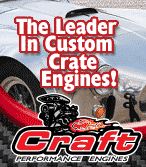
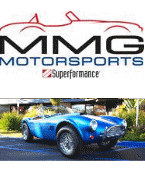


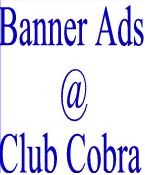
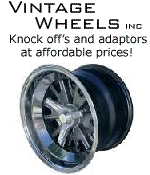


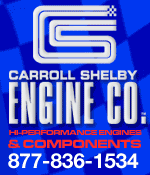













 Linear Mode
Linear Mode



